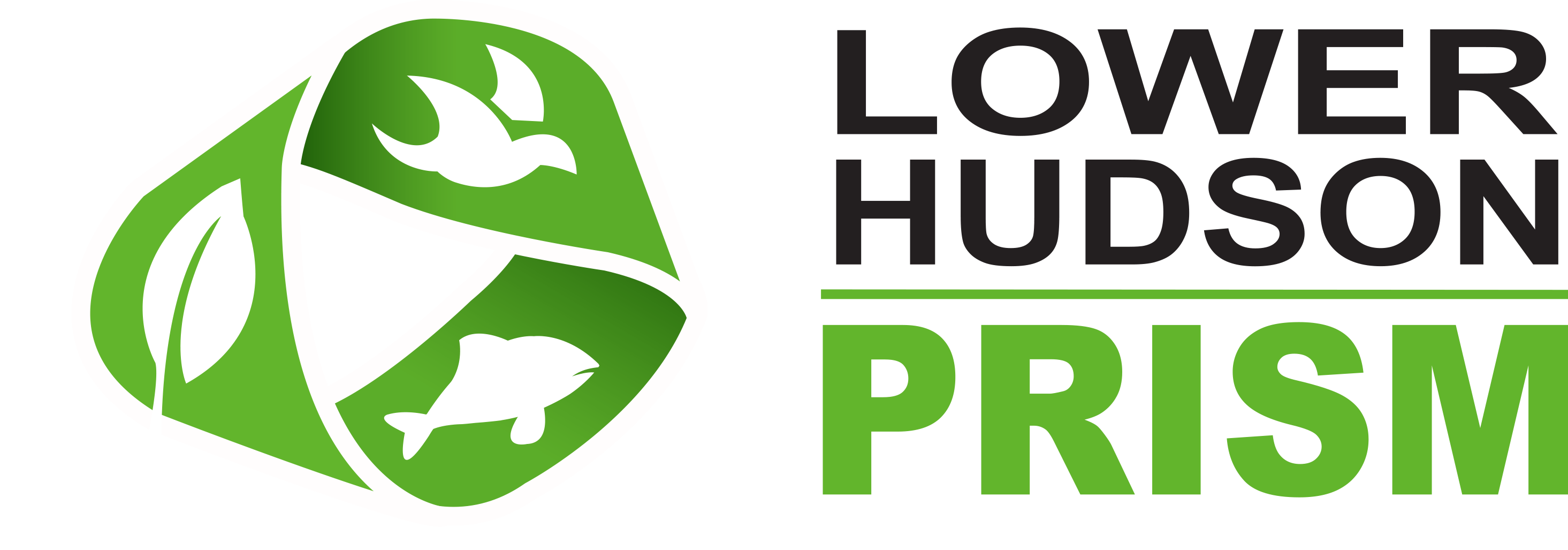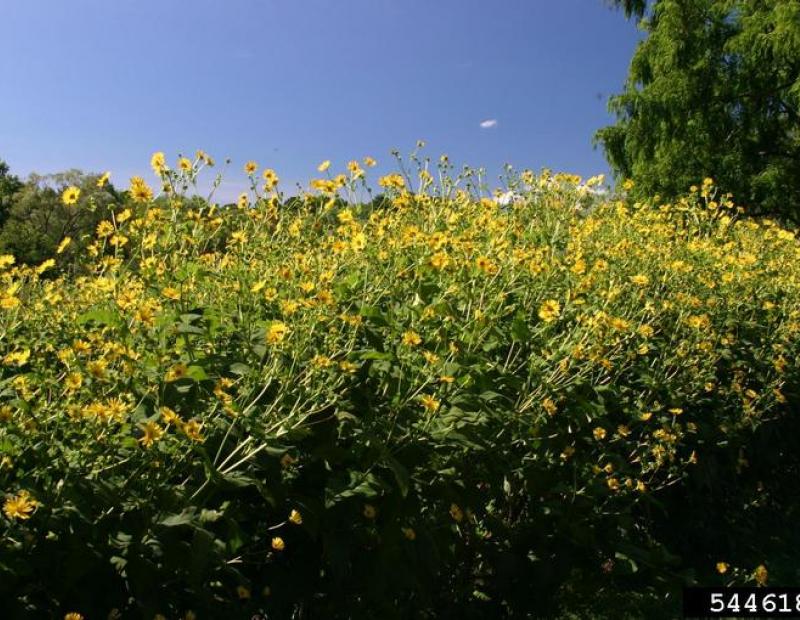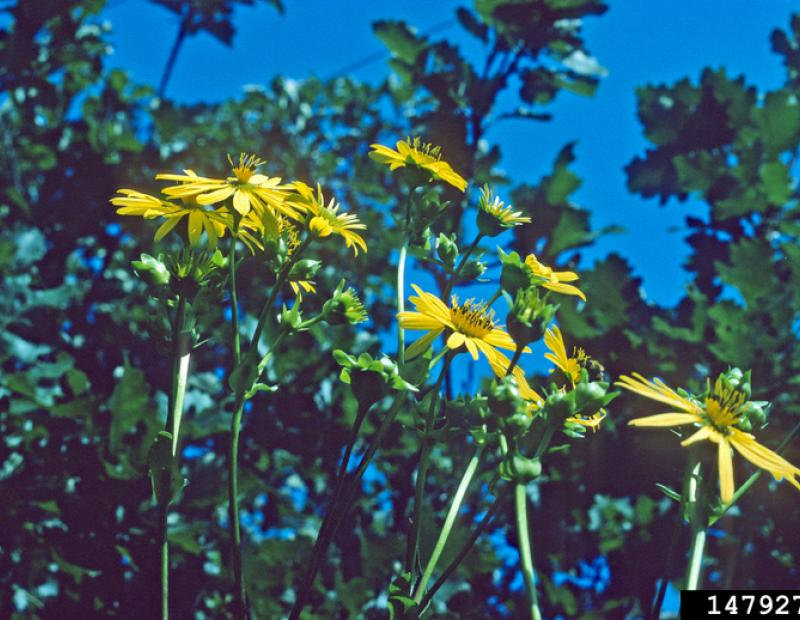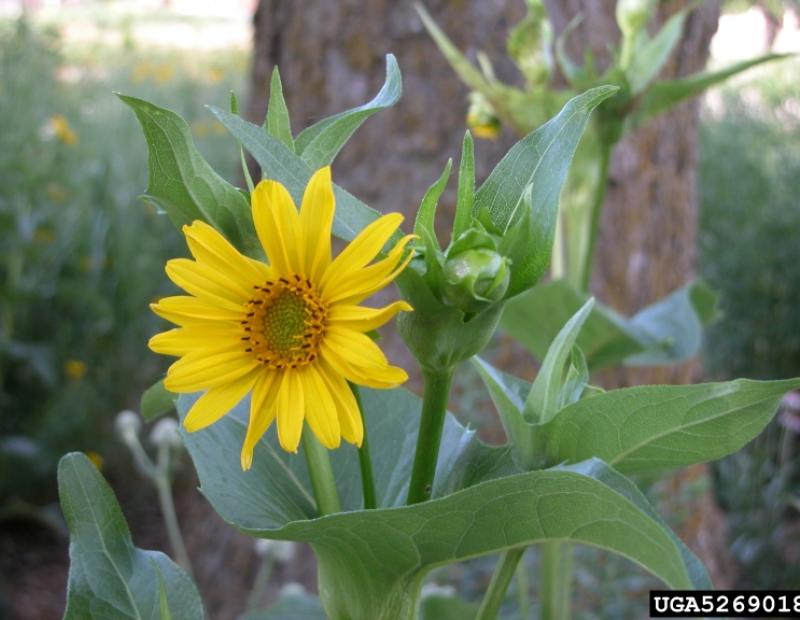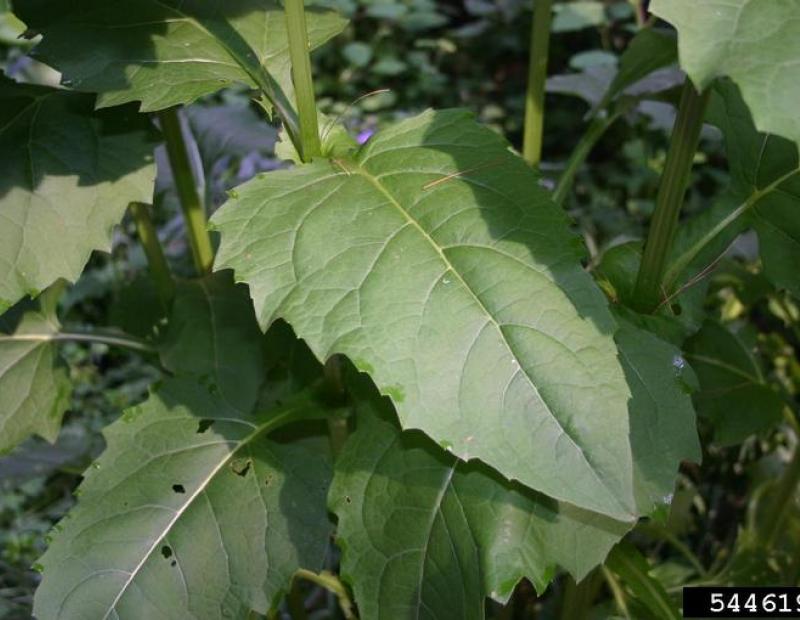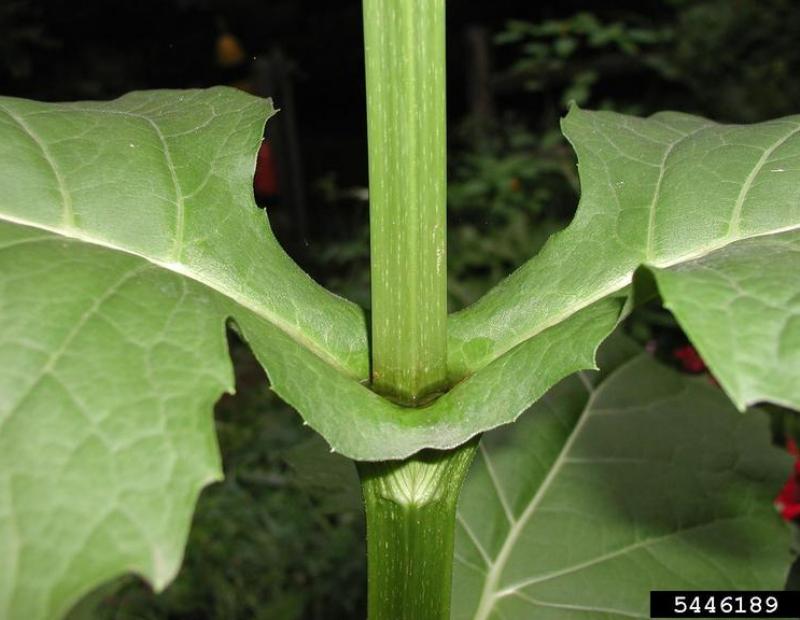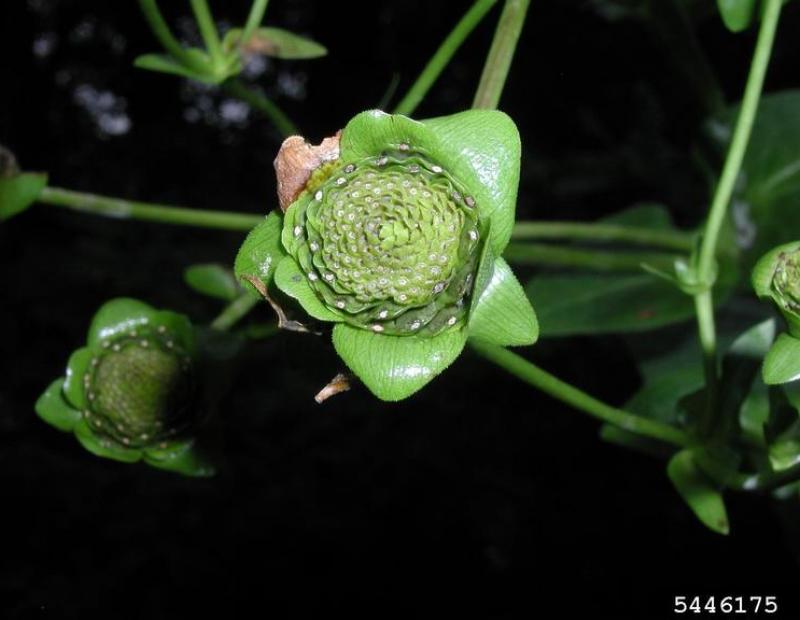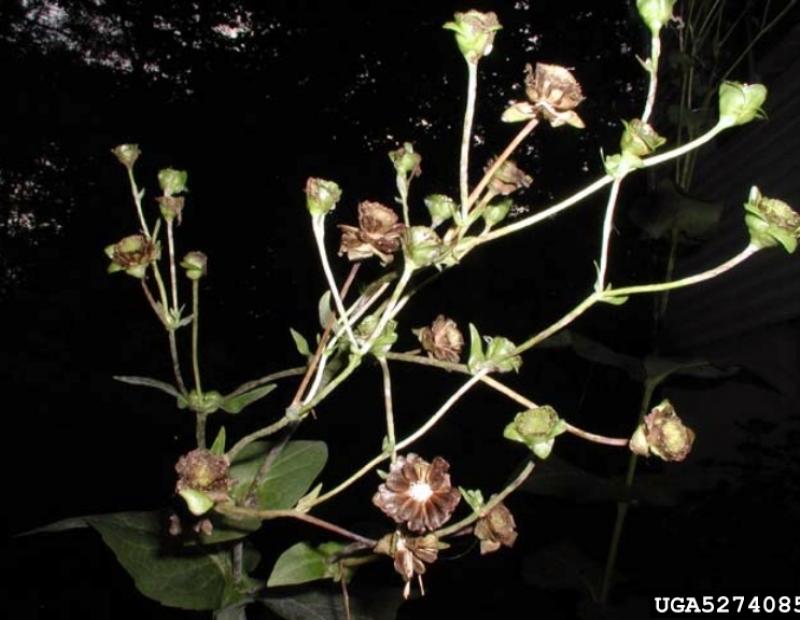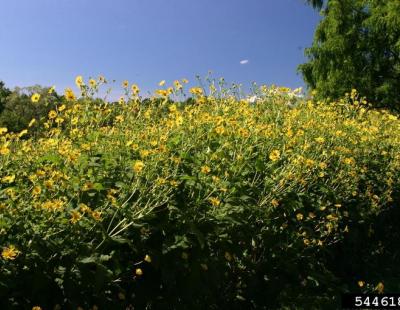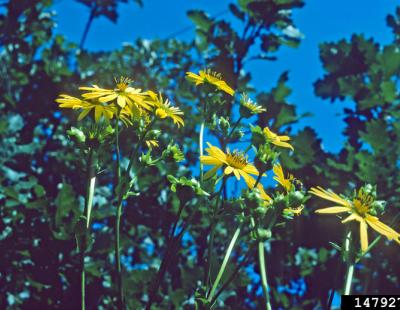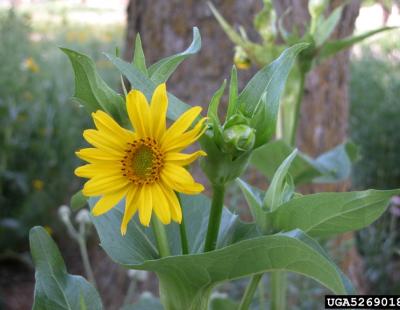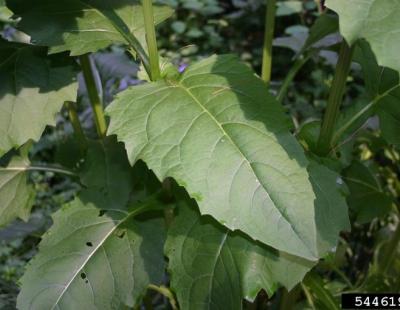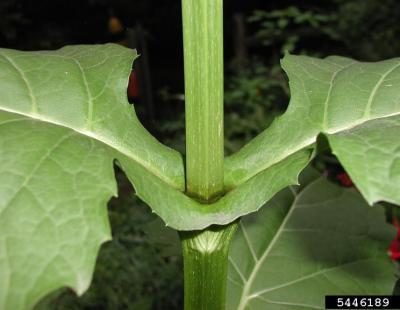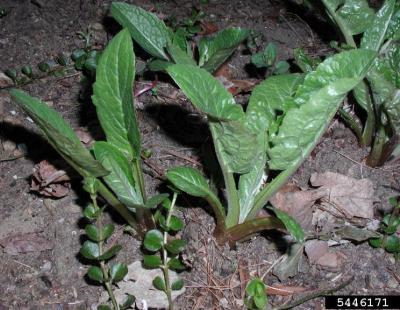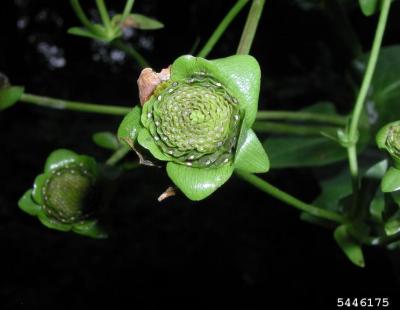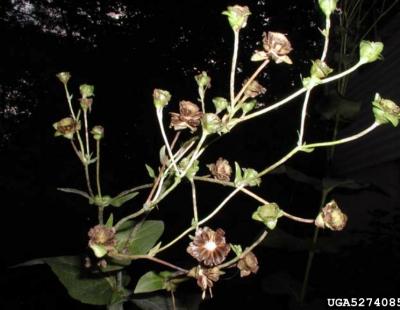Vertical Tabs
- Cup plant is a member of the Aster family (Asteraceae).
- Cup plant is a tall, striking member of the sunflower family. Growing up to 8 feet in height, the plant’s summer-blooming bright, showy, yellow flowers are held on a conspicuously square, hairless stem. (2)
Leaves
Leaves are opposite, oval to triangular in shape, with a coarsely toothed margin. Leaves are fused together, with the stem seeming to pierce the ‘cup’s’ center.
Flowers
Large, yellow sunflower-like flowers bloom July through September. Flowers are up to three inches in diameter and produce dry, winged ‘achenes’.
Although cup plant is native to a wide swath of the central and southeastern United States, this species exhibits invasive tendencies outside its native range. Commonly occurring in moist woods, thickets, wet meadows and prairie, in its introduced range cup plant can form dense stands along riparian corridors and in ditches, significantly altering the herbaceous layer by outcompeting other native plants. (2)
Biological Control
As a North American native, a biological control option is very unlikely.
Manual or Mechanical Control
Pulling / Digging Up: Seedlings and young plants have shallow roots - pulling is easy and very effective. Populations should be monitored for at least 3-4 years to ensure the seed bank is exhausted. (5)
Mowing: According to the USDA plants website, cup plant does not have the ability to re-sprout after cutting. However, this species spreads vegetatively very easily and has substantial, shallow underground rhizomes. If utilizing this method of management all new, surrounding shoots must be cut in addition to the main stem. (5)
Girdling: Not applicable
Prescribed Fire: No information available, although cup plant is not known to be resistant to fire. (5)
Prescribed Grazing: Cup plant is a popular forage plant, particularly in Europe. However, as of now, no research has been conducted on this as a suitable method of control. (6)
Soil Tilling: Tilling is not a recommended method of control as cup plant often colonizes fragile, wet soils vulnerable to erosion.
Mulching: Not applicable
Solarization: Not applicable
Hot Foam Spray: No information available
Chemical Control
The pesticide application rates and usage herein are recommendations based on research and interviews with land managers. When considering the use of pesticides, it is your responsibility to fully understand the laws, regulations and best practices required to apply pesticides in a responsible manner. At times, the pest you seek to treat may not be on a pesticide label, requiring a 2ee exemption from NYSDEC. Always thoroughly read the label of any pesticide and consult the NYSDEC or a licensed pesticide applicator with questions.
Foliar Spray: A springtime foliar spray of 2-3% glyphosate pre-flowering is effective against this species. Herbicides containing triclopyr, 2,4-D, or metsulfuron are all effective and do not affect grass species. As cup plant often inhabits wet environments, only products safe for use close to water should be utilized for this species. When using herbicide, always follow directions on the label. (2)
Cut Stump: Not applicable
Basal Bark: Not applicable
Hack-And-Squirt
Stem Injection: Not applicable
Pre-Emergent Spray: Not applicable
General management overview and recommendation
As with any other invasive infestation, large stands of cup plant are best managed via a combination of mechanical and chemical means. Small seedlings can be hand pulled while larger plants must be sprayed to attain good control. All managed infestations should be monitored to ensure exhaustion of the seed bank and to prevent reinvasion from nearby populations. Any new seedlings can be hand pulled or sprayed.
Post treatment monitoring
Controlled populations should be revisited for at least five years to ensure exhaustion of the seed bank. (4)
Disposal Methods
Mowed, cut, or pulled cup plant can be composted so long as the seed is not full, ripe, and therefore viable. Stems and rhizomes should be crushed, or allowed to dry out completely, before composting in order to prevent regrowth.
REFERENCES
- http://www.jstor.org/stable/2445099
- http://www.eddmaps.org/ipane/ipanespecies/herbs/Silphium_perfoliatum.htm
- http://www.illinoiswildflowers.info/prairie/plantx/cupplantx.htm
- https://www.researchgate.net/publication/304634710_Restoration_Implicati...
- https://plants.usda.gov/java/charProfile?symbol=SIPE2
- http://www.cup-plant.com/usage.html
- http://www.nyis.info/?action=nycrr_575#Prohibited Wetland Plants
- https://gobotany.newenglandwild.org/species/silphium/perfoliatum/
